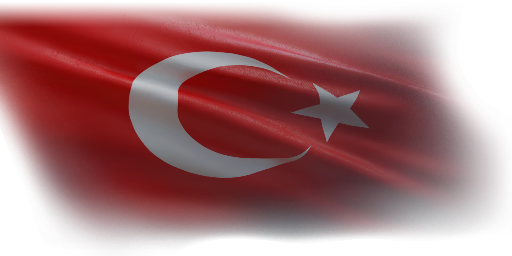
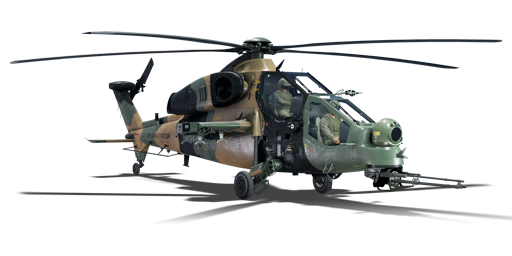



The T-129 ATAK was a modified version of the A129 Mangusta made by Italy for the Turkish Air Force's ATAK programme. In March 2007, the Turkish government began negotiations with Agusta-Westland to jointly develop a new variant of the A129 Mangusta. The changes included stronger engines in the form of the CTS 800 and different avionics and optics compatible with Turkish weapons. The first serial T129 was delivered to the Turkish army in 2014. By 2024, Turkey had over 50 T129s of various modifications in service, and a number were also supplied to the Philippines and Nigeria.
Introduced in Update "Drone Age", the T129 differs from the Italian A129CBT particularly in its armaments: instead of Hellfires, the T-129 is equipped with Turkish-made L-UMTAS and CIRIT missiles. The L-UMTAS have a very long travel time, which lowers the efficiency of the helicopter and allows them to be easily evaded. The CIRIT, however, are quite effective, especially against less armoured targets. Other noteworthy armament includes Stinger air-to-air missiles and a potent 20 mm cannon which will aid you in taking out enemy aircraft or ground vehicles. The T-129 can be a great surprise helicopter to the enemy team as the powerful engines allow it to get to the battlefield very quickly. It's good to note that the helicopter is not very survivable; if hit by a missile or enemy ground fire, it will be destroyed quite quickly. It does have access to chaff and flares, so if you are close to the battlefield, you may increase your chances of survival by using them.
| Belt | Belt filling | Armor penetration (mm) at a distance: | |||||
|---|---|---|---|---|---|---|---|
| 10 m | 100 m | 500 m | 1000 m | 1500 m | 2000 m | ||
| HEI-T/HEF-I/HEF-I/AP-I | 40 | 36 | 22 | 12 | 6 | 3 | |
| HEI-T/AP-I/HEF-I/AP-I | 40 | 36 | 22 | 12 | 6 | 3 | |
| HEI-T/HEF-I/HEF-I/AP-I | 40 | 36 | 22 | 12 | 6 | 3 | |
| HEI-T/AP-I/AP-I/AP-I | 40 | 36 | 22 | 12 | 6 | 3 | |
| HEF-I/HEF-I/HEF-I/AP-I | 40 | 36 | 22 | 12 | 6 | 3 | |
| Name | Weight | Slot | ||||
|---|---|---|---|---|---|---|
| 2 × | 20.2 kg | 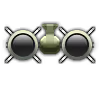 |  |  |  | |
| 19 × | 200.3 kg |  |  |  |  | |
| 4 × | 210 kg | 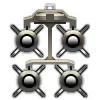 |  | |||
| 2 × | 50 kg | 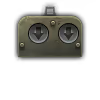 |  |  |  | |
| 4 × | 90 kg | 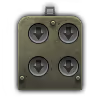 |  |  |  | |







 2 x (50 / 280 / 430) %
2 x (50 / 280 / 430) % 
 2 x 232 %
2 x 232 % 

Flight performance |
|---|
Survivability |
|---|
Weaponry | |||
|---|---|---|---|